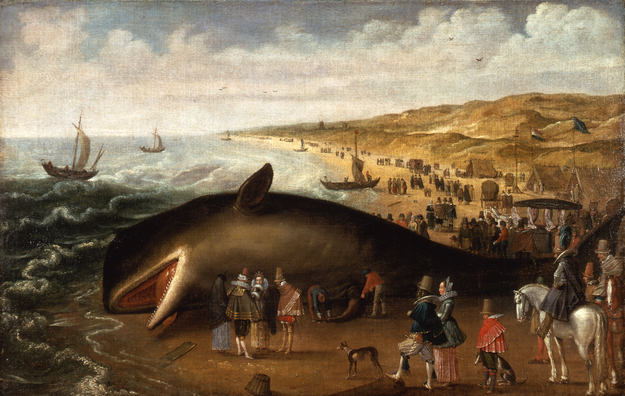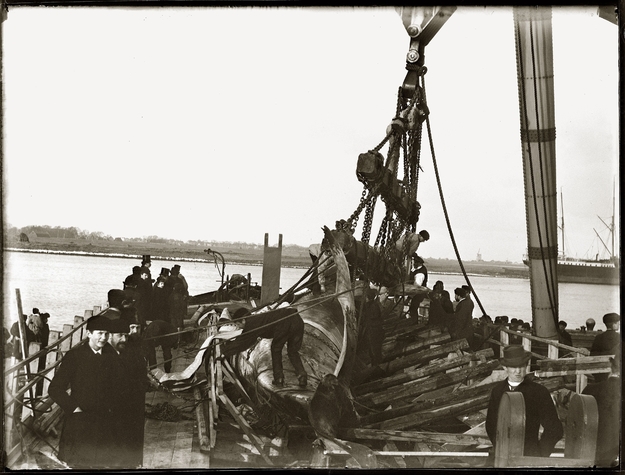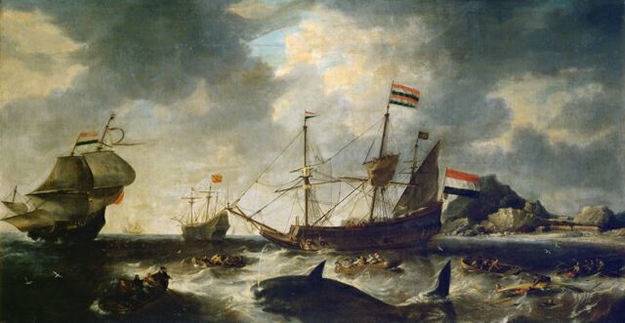“Lying in the bay were five large whale carcases which still had not been flensed through lack of manpower. There was a "great and ghastly stench" and, after a few fine days, the sun had melted the blubber from the decomposing whales, so that oil lay a finger thick all over the surface of the bay.” (Jacob, 1984)
It is no secret that the prosperity of 17th/18th century Netherlands was due to their superiority in all things seafaring-related: from ship building, to monopoly on trade routes, to willing labour force aboard ships. And naturally, one of the most lucrative business then was also whaling. Today, the Netherlands is known as one of the conservationist countries: those who plead moratorium on all whaling-related activities due to the threat on whale population. However, retract back to several centuries ago, whaling brought about incredibly valuable products: whale oil, even meat and bones.
The process of extracting whale oil can be broken down to two stages: removing the blubber from the animal, also known as ‘flensing’, and boiling the blubber to extract the oil, also known as ‘trying-out’. The result of these processes is the valuable oil that contributed to the Dutch’s wealthy economy. It was mainly used to fuel oil lamps all the way up to 19th century. Whale oil was preferred due to it burning more brightly and with less smoke. But the oil also has a disagreeable fishy smell. But that is a small price to pay considering that the Dutch had monopoly over the industry and had become the chief supplier of whale-based products for most of Europe by the 17th century. Certainly, the whaling merchants also kept the prices relatively high throughout their monopoly.
In the beginning, the preferred method of capture was bay-whaling (Schokkenbroek, 2008). The name is derived from the fact that whaleships anchored along shores and bay in the case of a baleen whale sighting. The whalers then wait for the fattest and slowest one; as the baleen whale remains afloat after being harpooned, the seamen could drag the carcass to the shore and therefore begin the extracting process onshore. This method is evidenced by the fact that there are oil-cookeries (so-called Traankokerijen) around the oceanic areas where the Dutch were present, most notably near Spitsbergen (now Norwegian territory). The best example of a known dutch-related cookery was on Amsterdam Island, on the northwest coast of Spitsbergen (Schokkenbroek, 2008). But soon, a major change in method occurred: from bay-whaling to ice-whaling.
As bay-whaling became a frequent activity, the whales also learned to move further away from the shore. This meant that the whalers needed to find away to adapt to the changes; what followed was advancements and changes in seafaring vessels. Seamen could no longer tow a dead whale to the shore, and therefore land stations on these remote islands fell obsolete (Jacob, 1984). In fact, after this transition, whale oil was no longer marketed as Greenland oil but Holland oil, which suggests a change in the location of the trying out process (Schokkenbroek, 2008). But what came to replace this were specially-designed ships that allowed the men to begin processing blubber at sea. With the ice-whaling method, the whale itself was “cut from the mouth and hoisted aboard” and “peeled like an orange”; the blubber is removed in large sheets but later cut into smaller sections, and stored in casks. All of this smelly horror would have occurred on the main deck of the ship which, by now, had been customise to accomodate the flensing activities onboard. Soon as it is full, the ship is Amsterdam-bound, where these casks of blubber are sent to surrounding villages and processed into oil.
What is most interesting to us is the fact that raw blubber is transported through the port of Amsterdam and through the city in order to be processed into oil. This meant that the stench of whale carcass must have wafted through the port at an incredible rate. By the 1600s, whaling ships leaving the Netherlands was about 100, and at the zenith of the industry, it was approximately 240 ships (Schokkenbroek, 2008).
Imagine the aroma by the port: a pungent carcass dominating the smellscape, only to leave behind hints of fishy-smelling fat that lights up most of Amsterdam’s households.


